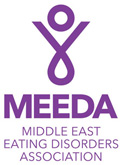CBT has been one of the determining treatments for my recovery. Not only did it help me let go of a perfectionism that kept moving from one area of my life to another, it also allowed me to consider starting a new business without being completely crippled with imposter syndrome. In this little Q&A with ‘The Psychiatry and Therapy Centre‘, we explore CBT in more details.
What does CBT stand for?
CBT stands for Cognitive Behavioural Therapy
How is it different from standard psychotherapy/talk therapy techniques? What is unique about it?
CBT is a short-term therapy, which focuses on the interaction of thoughts, feelings and behaviours. CBT predominantly takes a ‘here and now’ approach, meaning that therapy tends to be focused on the individual’s difficulties in the present, as opposed to focusing on the past and early life experiences. However, CBT does consider and work to make sense of an individual’s early life experiences and how they may be influencing the client difficulties in the present. CBT is more structured than counselling or psychodynamic therapies and tends to focus on a specific issue, working towards clients’ goals.
Which patients/mental health symptoms can particularly benefit from CBT?
CBT has a wide-ranging evidence base. Typically, problems that CBT has been shown to work well for are: depression, anxiety, stress, low self-esteem/ self-confidence issues, assertive communication, Obsessive Compulsive Disorder (OCD), Generalised Anxiety Disorder (GAD), Body dysmorphic disorder (BDD)/ body image problems, social anxiety/ performance anxiety, public speaking, panic disorder/ panic attacks, specific phobias, Post-Traumatic Stress Disorder (PTSD), health anxiety, chronic pain, clinical perfectionism.
How can patients recognize CBT practitioners?
Fully qualified CBT therapists usually have completed some form of postgraduate training specifically in CBT. Moreover, CBT is widely taught on clinical psychology doctorate programs. It is essential that the therapist has some form of training in CBT. If you are not sure, ask your therapist what training they have done in CBT.
Concretely, how does it work?
During sessions, you will work collaboratively with the therapist to explore patterns of unhelpful thinking and behaviours that may be maintaining your distress. You will also explore where these difficulties come from and what early life experiences may have influenced the difficulties in the here and now. Therapy then moves on to helping you become equipped with coping strategies that can change the way you feel and respond to situations in the future. CBT is an active form of therapy that guides you to become your own therapist. You are often given tasks to complete between your sessions in order to facilitate your recovery.
Is it useful for children too? In what instances?
CBT can be useful for children and young people too. It can help for symptoms of depression, anxiety, panic, OCD, PTSD, phobias, social anxiety and stress.
Can CBT be combined with taking medication?
Absolutely.
How many sessions (on average) will be required to benefit from CBT?
It really does vary depending on that type of issue the client is facing. The number of sessions can range from 6 – 30 sessions. Your CBT therapist would usually recommend at least 6 sessions and at this point a review of the therapy takes place. You would have the opportunity to discuss how you find CBT, if it is helping or not and the next steps for continuing therapy.
Is insurance typically covering CBT in the UAE?
We would always recommend that the individual contacts their insurance provider before starting therapy, in order to find out whether psychotherapy is included in their coverage.
Thanks to ‘The Psychiatry and Therapy Centre‘ for these answers!
NB: In a future post, we will explore the specific type of CBT dedicated to eating disorder recovery, called CBT-e. Make sure to sign up & subscribe for blog posts alerts if this is of interest to you!
Take care





